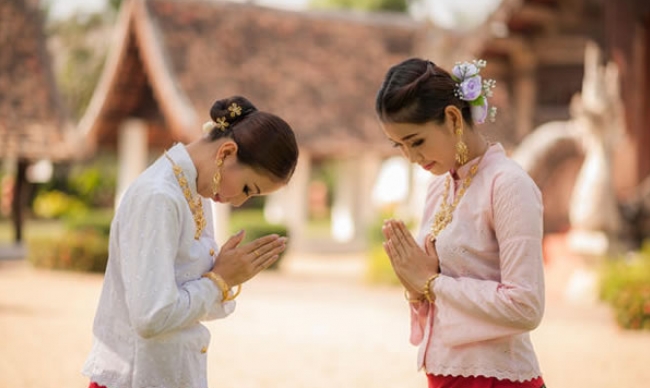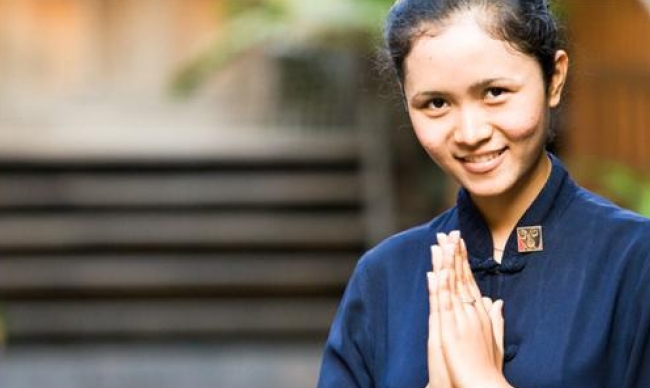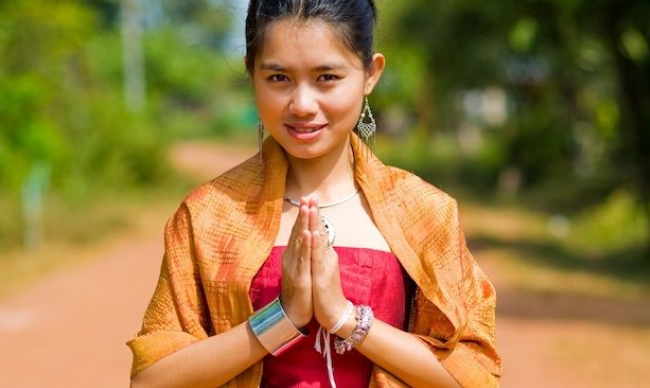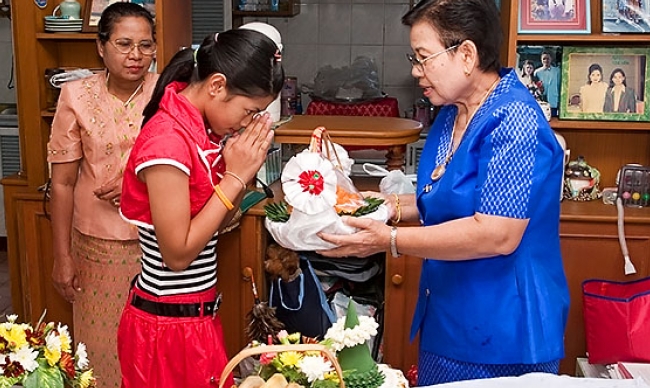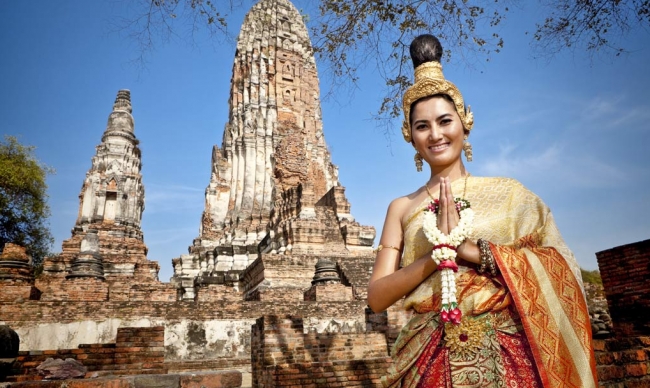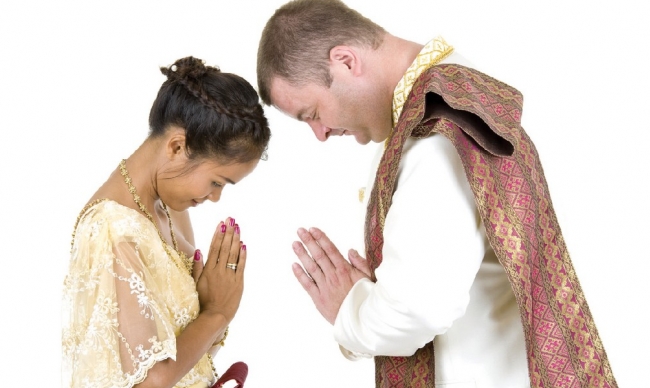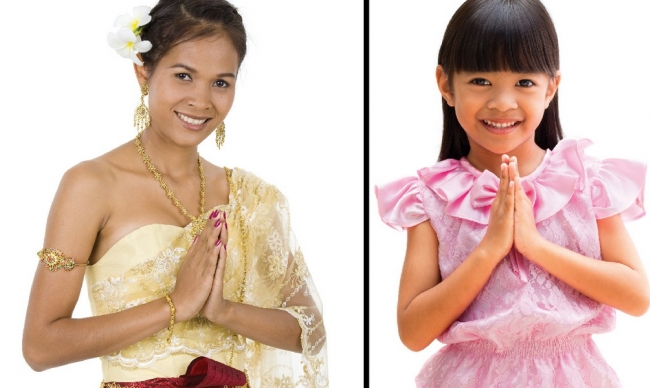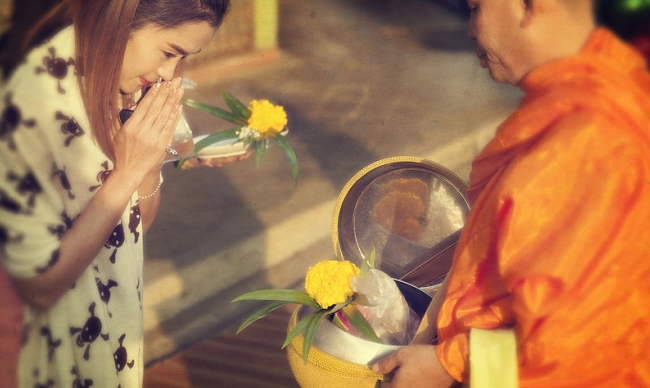Wai in Thailand
Wai is the traditional greeting gesture in Thailand. The wai is a graceful, totally unique action practiced throughout the country. It is accompanied with slight bow, and palms pressed together in the prayer position. It plays a very important part in Thai etiquette to greet and show respect toward other people.
To wai, place the palms of your hands together and hold them close to and in front of your chest, then slowly lower your head. The position of the bow and the hands in relation to the face indicates the respect or reverence to the giver of the wai. There is a saying that making a wai is like making the shape of a lotus bud, which is the most important symbol for Buddhists.
The Wai is performed in different situations. Besides greeting, the wai is a polite way to show respect to Buddhist monks, sacred objects and seniors. Thai people also use wai to bid farewell, say “sorry” and express gratitude when receiving gifts from others. The performance of the wai is determined by the social status and age of the people who are greeting each other. The Thai people take social status very seriously. The person of higher social status is the one who should be wai-ed by the junior. if someone is older than you, you should wai them unless you employ them. You shouldn’t wai anyone you pay for service such as waiters, shopkeepers. You also shouldn’t wai your peers and friends. When being wai-ed to, you will be considered impolite if you don’t return or at least acknowledge the wai.
The wai is a unique, graceful action practiced throughout Thailand. It is a distinctive characteristic of Thai culture. Although Western etiquettes are accepted in Thailand, it’s a good idea to learn how to wai because Thais are not familiar with physical contact with strangers.
You might also read...

Considered as one of the oldest languages in East and South-East Asia, Thai, the official national language of Thailand, is spoken by the majority of the population. It is classified by linguists as...

Thai rich and long-lasting culture features distinctive traditional rituals. Thai conventional liturgies are shown clearly through wedding ceremony and some Buddhist rites.

The formal Thai national costume, known in Thai as "Thai phra ratcha niyom" (literally Thai dress of royal endorsement), includes several sets of clothing designed for use as national costume in...










































